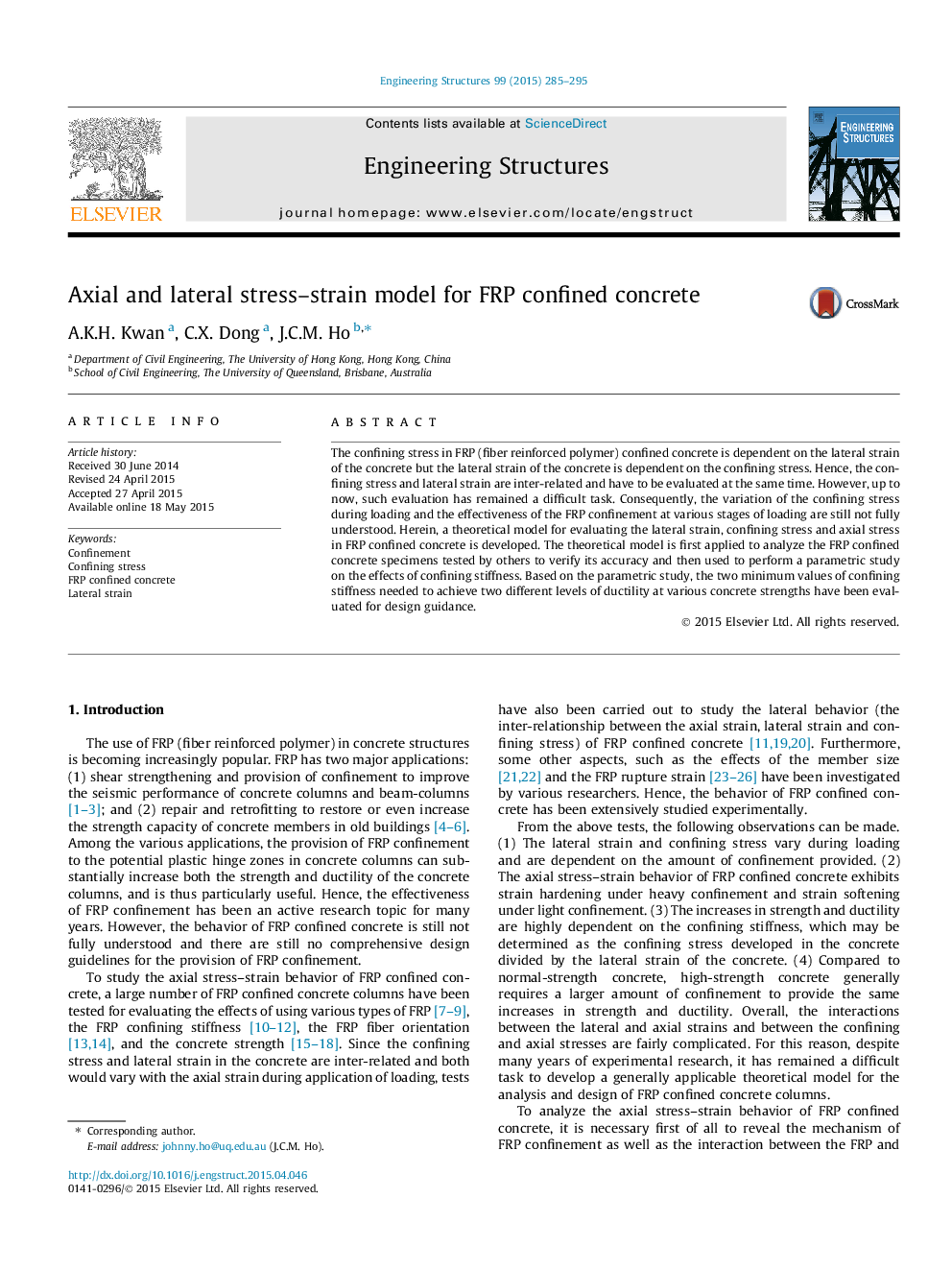| Article ID | Journal | Published Year | Pages | File Type |
|---|---|---|---|---|
| 266182 | Engineering Structures | 2015 | 11 Pages |
•A new axial and lateral stress–strain model for confined concrete has been developed.•Accuracy is within 10% error in predicting the axial stress–strain curves.•Two ductility levels for FRP columns have been proposed with minimum confining stiffness.
The confining stress in FRP (fiber reinforced polymer) confined concrete is dependent on the lateral strain of the concrete but the lateral strain of the concrete is dependent on the confining stress. Hence, the confining stress and lateral strain are inter-related and have to be evaluated at the same time. However, up to now, such evaluation has remained a difficult task. Consequently, the variation of the confining stress during loading and the effectiveness of the FRP confinement at various stages of loading are still not fully understood. Herein, a theoretical model for evaluating the lateral strain, confining stress and axial stress in FRP confined concrete is developed. The theoretical model is first applied to analyze the FRP confined concrete specimens tested by others to verify its accuracy and then used to perform a parametric study on the effects of confining stiffness. Based on the parametric study, the two minimum values of confining stiffness needed to achieve two different levels of ductility at various concrete strengths have been evaluated for design guidance.
